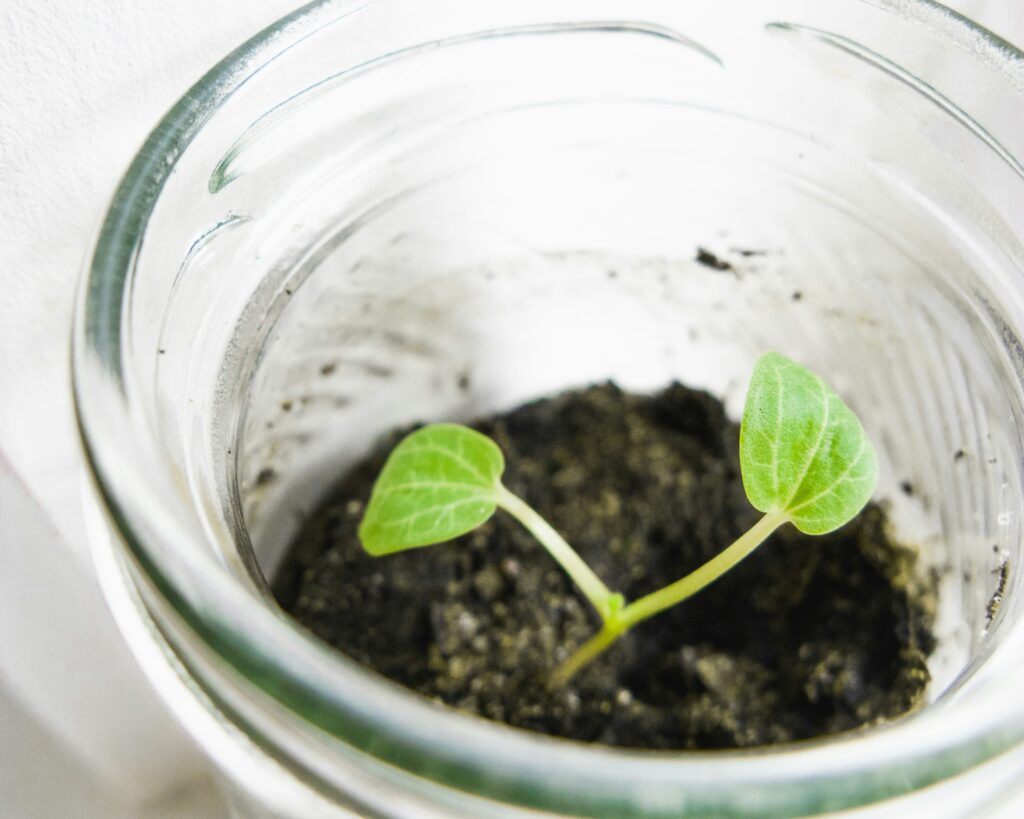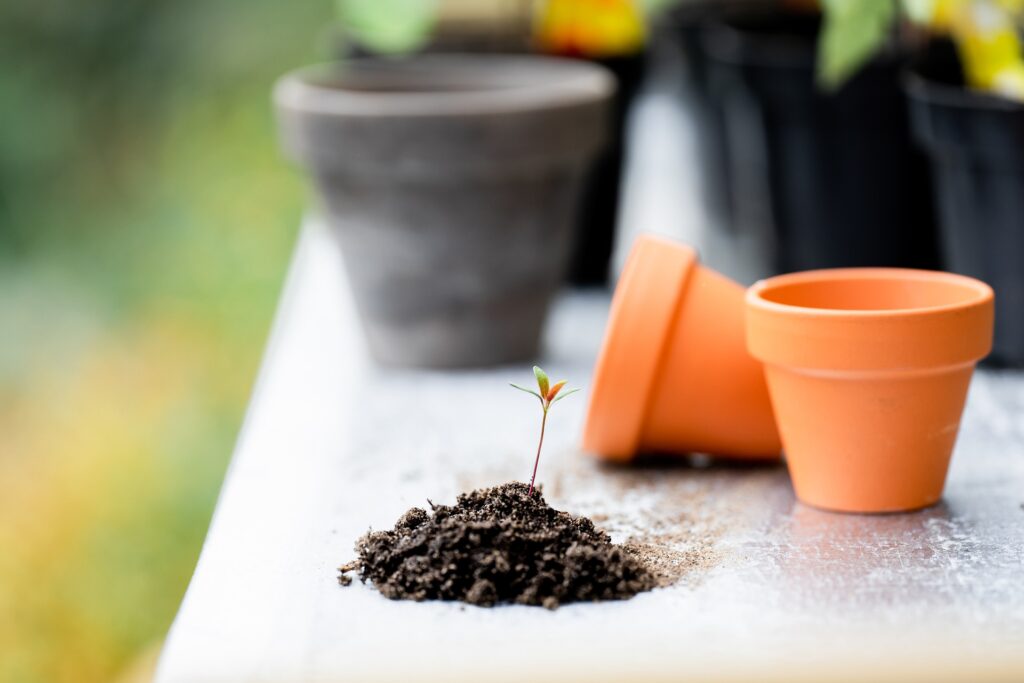As a landscaper, you have high expectations for potting soil. It should sustain and feed your plants for many years to come. The majority of bagged soils, however, aren’t made for this. This is why you should use the best potting media for your indoor and container plants, along with some helpful tips.
Soil Mixture Properties
The majority of commercial soilless potting mixes are composed of peat, typically sedge or reed peat, and their pH is regulated using lime. They appear attractive right out of the bag, and frequently fertilizer or water-retention crystals are added to improve them. Regretfully, plants never survive for very long in this type of potting material. Rather, the plant stops growing as quickly and loses its brilliant appearance after one or two growth seasons. Plants that are planted in bagged soils of poor quality are lucky to last even a few months.
This occurs as a result of potting mixes made solely of peat not being intended for long-term use. In reality, they’re not made for plants at all.
Their purpose is to make your life easier. They are also easier to bag and sell, and their production costs are lower.
The issue is that peat breaks down easily. All soils break down over time, just like any other organic material, but peat breaks down particularly quickly.

What Potting Means
When the term “potting” refers to soil, it always refers to soil that is meant to be used in a container. If you are planting in anything other than the earth, you will be aware that you are planting in a container. That could indicate that you’re gardening indoors in raised garden beds or indoor pots made of terracotta or ceramic indoor pottery outside planter boxes.
Potting soil:
Potting soil is artificially created, structured soil that lacks real dirt within the compound. It is designed to offer the best possible drainage, which is essential for planting in any kind of container (pots, raised gardens, etc.).
The fundamental requirements of any plant are met by potting soil, which serves as a growing medium that supports the plant and gives its roots plenty of room to spread out.
You must include fertilization in your plant care routine because potting soil lacks organic content. The kind of plant you’re cultivating will determine the type of fertilizer needed.
There may be a small amount of organic fertilizer in the potting soil. Mycorrhizal spores are another ingredient in the Espoma line of soils; these spores cooperate with a plant’s root system to boost its size and effectiveness.
For growing flowers, succulents, and houseplants, potting soil is ideal.
Potting mix:
Because container gardening has become more and more popular, potting mixes have been created. We strive to make the most of the limited space in our increasingly compact homes and outdoor living spaces.
In essence, potting mixes are made of potting soil and organic materials. In addition to possibly having biostimulants like mycorrhizal spores, they will typically contain a low-ratio fertilizer.
Even though it sounds a lot like “potting soil,” it isn’t actually made of soil. Rather, the organic materials in this mixture—peat moss, sphagnum moss, pine bark, and so forth—assist with drainage. The primary reason for the higher cost is that additional organic material supplies the nutrients that plants require for optimum health.
The main purpose of potting mixes was to support crops and vegetables that were grown in pots. Because it usually produces the greatest results, potting mixes are also used by many cannabis growers.
Issues With Fertile Soil Decomposition
Your plants will be impacted by multiple detrimental effects when the potting mix breaks down.
Peat gradually compresses. The dirt in the pot will appear to be settling, but it is actually disintegrating. The particles circle the roots as they move, gradually depriving them of oxygen. First to be impacted are the smallest, newest, and youngest roots. Plants require plenty of air around their roots in addition to water and fertilizer. A healthy plant has adequate aeration in its root zone. A plant is dead when it is unable to breathe.
Erosion is hindered. Water finds it more difficult to pass through the pot as the soil particles get smaller and smaller. This issue will actually get worse if the pot’s bottom is covered with a layer of drainage pebbles. All you’re doing is giving the plant even less space to develop by filling the pot with less soil.
Salt accumulates. A faster accumulation of fertilizer-induced salts and solids is made possible by the slowing drainage. This puts strain on the plant over time and has the potential to burn the same delicate roots that the impaction of the soil is stressing.
Is it any surprise that plants that flourish for a few months in their new pots start to struggle once all of this occurs in a single season?
Ways to Make Your Potting Soil Better
To make sure your plants receive the soil they require, follow these steps:
Every year, you should repot any bagged potting mix that contains peat.
Enhance potting mix in bags. Adding some organic matter and perlite to peat-based potting mixes can help them, though it’s not a permanent solution.At the absolute least, properly flush the soil once a month. To completely flush the soil and remove any accumulated salts from fertilizer and tap water deposits, take the plant outside or to the kitchen sink.
Fill your jars with water. Through the pot’s bottom drainage hole, insert a wick. Although it won’t assist with compaction, this will help with drainage and wick away extra water in the container, which will lessen the likelihood of root rot.
Construct your own planting mix. A lot of gardeners create their own potting mixes using soil additives such as pumice, perlite, vermiculite, composted bark, peat, and coconut coir. This is a more sophisticated option, but if you develop your own soil, you can create a soil that will survive for two or more seasons.
What Soil Is Needed for Indoor Plants?
Different soil is required for houseplants than for plants in the landscape. Although the roots of plants grow in extremely small spaces in pots, the soil still needs to be able to do two things in order to provide the plants access to air and water: it must be able to retain moisture while also providing sufficient drainage. Fertilizer is also needed for indoor plants. Since the nutrients are rinsed out by regular watering, they usually require more frequent fertilization than plants grown in garden soil.
Indoor plants require a certain pH of soil, just like outside plants do. While many houseplants can tolerate a pH range of 6.0 to 7.0, which is slightly acidic to neutral, orchids, succulents, and cacti prefer a lower pH.
The Ideal Potting Mix for Houseplants
Instead of using potting soil, indoor plants should be grown in potting mix. For indoor plants, the ideal potting mix should have a light, fluffy texture that maximizes airflow and facilitates proper drainage. The potting mix is supplemented with a range of components, including wood fiber, coconut fiber, peat moss, perlite, and vermiculite. Additionally, slow-release fertilizer is frequently used.
The Ideal Potting Mix for Plants in Containers
Regarding soil, container plant potting mixes have certain additional needs based on the type of plant, but they generally have the same qualities as good indoor potting mixes: great drainage and moisture retention. For instance, nutrient-rich, fertile soil is necessary for vegetables grown in containers so that the plants can grow quickly over the course of one growing season. The potting mix for containers is enhanced with humus or compost and organic elements like earthworm castings, alfalfa meal, kelp meal, or feather meal, in addition to components that guarantee proper drainage, sphagnum peat moss, and perlite.
FAQ:
What is the finest potting mix for indoor plants?
The ideal potting mix for indoor plants comprises additional nutrients that are necessary for the plant’s growth, retains water, and drains efficiently.
How can high-quality potting mix be prepared for indoor plants?
Combine organic ingredients (humus, peat, coconut coir, and composted bark) with water-retentive (vermiculite) and drainage-enhancing (perlite) additives.
What distinguishes potting mix from soil?
Unchanged from its original site, soil comprises all the ingredients found there, including mineral components like sand, clay, and loam. Potting mix is a synthetic mixture produced specifically for plants in pots.
How should I pick my potting mix?
Choose the potting mix based on the needs of your plants. Apart from general-purpose potting mixes, specialty potting mixes are available that are designed to cater to the unique requirements of particular plants, like citrus trees, aroids, cacti, and succulents.
